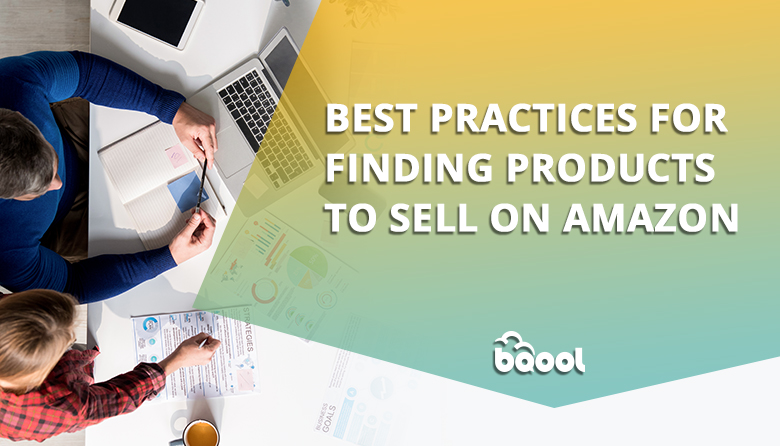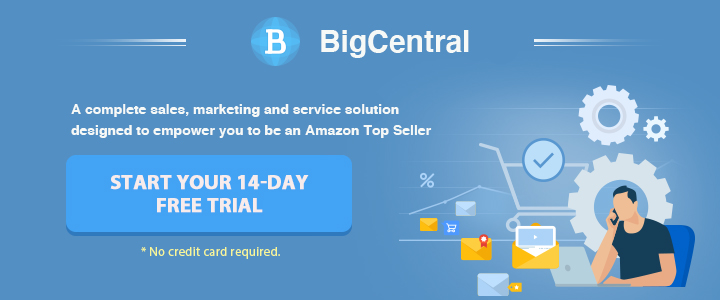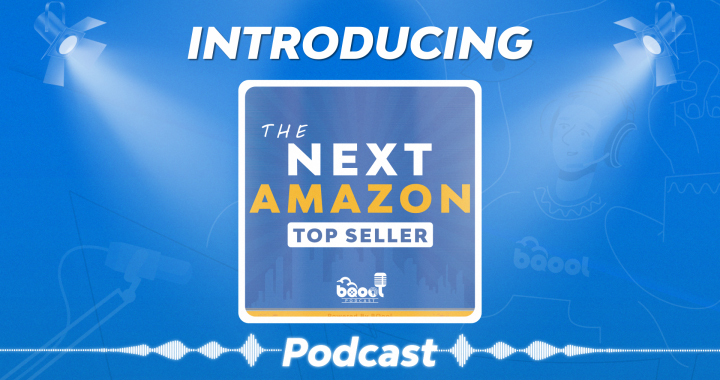Best Practices for Finding Products to Sell on Amazon

For private label sellers, the most imperative, and often most difficult, part of the business is finding a product that will sell like hotcakes. Most sellers spend a tremendous amount of time on product research because a good product will gain traction whereas a poor product is simply money down the drain. Here we explore ways to finding products to sell on Amazon and product research as well as things to consider during this process.
1. Pay attention to surroundings, passions, hobbies, problems
For some people, product ideas come naturally. They simply pay more attention to their surroundings and products they use on a day-to-day basis and think about how these products can be improved upon. Some people come up with product ideas for things they need, but can’t find on the market. Also, keep your eyes open when out and about, check out what products are popular in a boutique or specialty shops, and think about your own hobbies and what products are relevant to those hobbies. For example, someone who enjoys lying in a hammock but does not have a backyard for hanging one might come up with an indoor space-saving hammock idea.
2. Attend conferences and trade shows
People are coming up with new product ideas every day. Attend conferences or trade shows that are in your vicinity. New products are often showcased there and sellers not only get a first look at these new products, they get the hands-on experience, which gives them a feel of whether the product will sell. These events also provide a great opportunity to build a relationship with manufacturers as well as negotiate deals with them. However, this way is temporarily not available as traveling is not a good idea during the coronavirus pandemic. Alternatively, you can consider the following approaches to get some product ideas.
3. Browse resources on the Internet
There are plenty of resources on the Internet for product inspiration. Check out Amazon’s Best Sellers list, Movers and Shakers, or New and Interesting Finds to see what products are selling well. Moreover, you can also check similar sites such as eBay, Walmart, Etsy, etc., you can find a niche product with sufficient demand and not too much competition.
Take a look at Pinterest or Instagram to see what’s trending, or peruse discussion forums like Reddit to see what your peers are discussing and what product developers are working on. If you have an interest in certain categories or products, such as something related to your hobbies, find Facebook groups, and learn about their needs and wants. You could also type in keywords for products you’re interested in in the Amazon search bar and see what related terms appear, and get ideas from those terms.
4. Do Amazon product research
Product research can determine whether there really is a market for your products. Amazon sellers have two options when doing product research: manual and automated. Automatic product research tools such as BigTracker Extension that you can add to your Chrome browser to help find hot selling products with market potential according to the key metrics: estimated sales, revenue, reviews amount, and more.
During the product research process, there are several factors to consider when determining a product’s potential.
- Profitability – Once you’ve found prospects, check the sales rank on Amazon as well as use free extensions to gauge the products’ sales history and market demand, and forecast sales volume. Estimate your sales price and factor in all costs and expenses to assess whether the product would be profitable. Make sure to cover all your bases by including all manufacturing costs, packaging and shipping costs, as well as any applicable fees.
- Room for optimization improvements – In addition to finding a product having room for profitability, you can also take a look at the listings and read customer reviews to find out if there’s room for product improvement and allow you to provide something optimized and beyond your competition. For example, we randomly pick a Japanese brand mattress vacuum cleaner and check out its 1-star reviews. The comments indicated the product suction and dust detector are poor, loud, and the customer service is not supportive and responsive. So you can pay attention to these problems and provide a better product aiming to beat your competition.
You should also pay attention to product listing optimization. Take a look at some listings if they are properly optimized. Listing optimization not only can help you have a better search ranking on Amazon but also make your potential customers have a better understanding of your products and shopping experience. If you need to backtrack a bit and learn how to optimize listings, this guide can help.
- Category and brand restrictions – Amazon has started getting more and more categories and brands to protect its consumers. A crucial task during this product research process is making sure the category of interest is not gated, or get ungated before you dive in, otherwise your efforts may go to waste.
- Competitive landscape – Ensure that no big brands are already selling your product. It is difficult to compete against big brand names because they are more reputable and have better marketing resources than small individual sellers. Unless your product is super unique or has a strong advantage in certain aspects such as price, it would take a lot of effort to compete against big brand names.
- Possibility to expand product line – Once you’ve found a good prospect, think about the long-term business potential with this product and if there’s a possibility for expansion. Come up with accessories for your product or expand by adding variations. Consider creating related products for bundling to stand out from the crowd. If you specialize in or have a strong passion for a particular product category, creating quality products and expanding within the same category will help establish a strong presence and build a brand and reputation in it.
5. Select your source for products
Once you are done researching which products to sell, you should start thinking about sourcing them.
Where you source products and purchase inventory will vary depending on your Amazon business models. There are three main types of sellers: private label, arbitrager, and resellers.
- Private label: You purchase an unbranded product from a manufacturer and add your own logo to the existing product and turn it under your own company’s brand. The most common practice is to purchase inventory from suppliers and manufacturers in China, and the most common source is Alibaba where you can find suppliers around the world.
- Resellers: You purchase goods directly from suppliers (manufacturer, wholesaler, distributor) in bulk at wholesale prices and sell them on Amazon at retail prices. The easiest way to be a reseller is to find a reliable wholesale supplier and ask them to be a stockist of their products. But where can I find trustworthy dropshipping and wholesale suppliers? You can check some buyer & supplier directory, such as WholesaleCentral, Salehoo.
- Arbitrage: You went to Walmart and noticed that Cuisinart waffle makers are 50% off. You see an opportunity to buy low and sell high for a profit, so you buy 10 units and send them to Amazon FBA for resale. Arbitrageurs buy something where it’s cheap, and sell it where it’s expensive. Discount stores, large chain stores, liquidation, and clearance sales are the most popular place to source products.
Wrapping Up
To quickly discover a winning product and get estimated sales & revenue, you will need a product research tool to automate all the product data and information collection to launch your business successfully.

This blog post was originally published in January 2017 and was updated in July 2020 due to product updates or Amazon policy changes.








